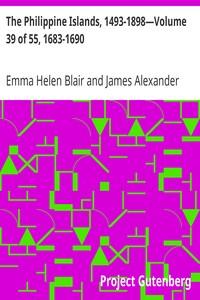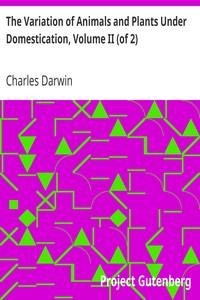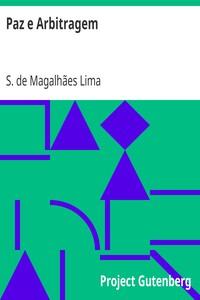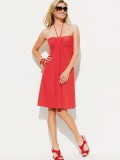Read this ebook for free! No credit card needed, absolutely nothing to pay.
Words: 86848 in 15 pages
This is an ebook sharing website. You can read the uploaded ebooks for free here. No credit cards needed, nothing to pay. If you want to own a digital copy of the ebook, or want to read offline with your favorite ebook-reader, then you can choose to buy and download the ebook.


: The Philippine Islands 1493-1898—Volume 39 of 55 1683-1690 Explorations by Early Navigators Descriptions of the Islands and Their Peoples Their History and Records of The Catholic Missions As Related in Contemporaneous Books and Manuscripts Showing the
Preface 9
Miscellaneous Documents, 1683-1690
Dampier in the Philippines . William Dampier; London, 1697 21 Petition for Dominican missionaries. Francisco de Villalva; 122 Events in Filipinas, 1686-88. 131 The Pardo controversy. Juan Sanchez, and others; Manila, 1683-89 149 Official visitation by Valdivia. 276
Bibliographical Data 303
View of the city of Manila; photographic facsimile of engraving in Dampier's Nouveau voyage autour du monde between pp. 434 and 435; from copy in Library of Congress 89
Map of the Philippine Islands; photographic facsimile from Pierr? du Val's La g?ographie universelle, "Isles Philippines" , between pp. 306 and 307; from copy of original map in Biblioth?que Nationale, Paris 129
Autograph signature of Pedro Murillo Velarde, S.J.; photographic facsimile from original manuscript in Archivo general de Indias, Sevilla 195
PREFACE The present volume, which covers the period 1683-90, is mainly devoted to an account of the controversy between Archbishop Pardo and the religious orders on one side, and the secular government on the other--a conflict of which such events as the disputes between Salazar and Dasmari?as and Guerrero and Corcuera were but preliminary skirmishes. In this case the archbishop gains the ascendency, being re?nforced by one of the governors.
Dampier's account of his sojourn in the islands is here concluded from the preceding volume. He finds the Mindanaos friendly to the English, but distrustful of the Dutch and Spaniards. They are ingenious and clever in metal-work, and with very primitive tools and appliances make excellent utensils and ship-repairs; another industry of theirs is shipbuilding. The English ship remains about a week on the southern shore of Mindanao, to wait for favorable weather, and then proceeds to the Rio Grande of Mindanao, where it arrives July 18. The natives there are anxious to secure trade with the English merchants, and Dampier regrets that his companions did not resolve to give up freebooting for Spice-Island trade, especially as they were so well fitted, by experience and training, for establishing a trading-post, and had an excellent equipment for that purpose. The English officers maintain friendly intercourse with the natives, which enables them to see much of Malay life and customs. Some of the English sailors desert here, some are poisoned by the natives, and most of the crew become drunken and disaffected. The captain neglects to discipline them, and finally the crew sail away with their ship and leave him , with thirty-six of his men, at Mindanao. They halt at Guimar?s Island to "scrub" their ship and lay in water; then sail northward past Panay. At Mindoro they encounter some Indians, from whom they gain information as to the commerce of Manila, which they intend to attack and pillage. On February 23, the English begin their piratical acts in the Philippines by capturing a Spanish bark, near the coast of Luz?n. After describing that island, he relates how some of the English sailors left at Mindanao find their way to Manila. The men on Dampier's vessel, not finding the Chinese vessels that they expected to seize, decide to wait on the coast of Cambodia and Siam until the time when the Acapulco galleon is expected. Having cruised along the mainland until July 29, they direct their course to the Batanes Islands, north of Luz?n, arriving there August 6; they trade with the natives, clean the ship, and lay in provisions, intending to go afterward to harry the Manila commerce. But a fierce storm arises , driving them about for a week, and disheartening the men; and finally they sail from the northern end of Luz?n past the eastern coast of that island and Leyte, until they reach Sarangani, where they halt to repair their ship. Departing thence November 2, they go to Australia, and Dampier soon afterward leaves the ship--spending the next four years in the Malasian Islands, and, after numerous and varied adventures, arriving in England in September, 1691.
Francisco de Villalva, procurator for the Dominicans at Madrid, petitions for royal aid in sending forty missionaries of that order to the Philippines.
Some unknown Jesuit furnishes a "diary of events from June, 1686 to June, 1687." These include the arrivals and departures of ships from the port of Cavite; the deaths of prominent persons; the dissensions between the Jesuits and the archbishop, and between the religious orders; the conflicts between governor and Audiencia, and their relations with the archbishop; attacks by pirates; and other news-items, of miscellaneous character. A similar record continues through 1688.
A notable event in the history of the islands was the controversy between Archbishop Pardo and the secular authorities. Hundreds of documents and printed books are extant concerning this dispute, but our limited space will not allow us to reproduce many of these; it seems most useful for our purpose to give an outline of the main events during that time, as told by some of those who took part therein, both secular and religious, and representing different sides of the controversy. These contemporary documents are re?nforced with abundant citations from the chroniclers of the religious orders--the Augustinian Diaz, the Jesuit Murillo Velarde, the Dominican Salazar, and the Recollect Concepci?n; these are found in the annotations accompanying our text. The first account is that written by Juan S?nchez, secretary of the Audiencia, dated June 15, 1683; he relates the difficulties which arose between the secular and the religious authorities during the three years preceding that date--that controversy having begun in 1680, with the complaint of the cura of Vigan against the acting head of the diocese of Nueva Segovia, that the latter does not reside at the seat of that bishopric, and interferes with the above cura. The Audiencia undertakes to settle the affair, and the archbishop insists that it belongs to his jurisdiction. His cathedral chapter are offended at certain proceedings of his, and jealous of the influence acquired over him by Fray Raimundo Berart, a friar of the Dominican order . The new bishop of Nueva Segovia also claims that the Vigan case belongs to his jurisdiction, not the archbishop's. Several other cases occur in which Pardo acts in an arbitrary manner, among them his seizure of a shipment of goods for the Jesuits, and his excommunication of a Jesuit for declining to render him an accounting in a certain executorship entrusted to the latter--Ortega alleging that this affair, as purely secular, pertains to the Audiencia alone. The Audiencia endeavor to restrain Pardo, but in vain; and the strained relations between them quickly grow into open hostilities. The situation is complicated by various antagonistic elements, which may be briefly summarized thus: The archbishop's arbitrary conduct toward his own clerics and other persons, and his strenuous insistence on his ecclesiastical prerogatives; the undue influence over him obtained by his Dominican brethren; the jealousies between the various religious orders; and, still more fundamental, the unceasing conflict between ecclesiastical and secular authority--the latter embodied mainly in the Audiencia, as the governors often ranged themselves against that tribunal, under the pressure of ecclesiastical influence. To these may be added the remoteness of the colony from Spain, and its smallness, which renders the limits within which these human forces are at work more narrow and circumscribed, and therefore intensifies their action. After a long conflict between Pardo and the Audiencia, in which their weapons are used freely on both sides--decrees, appeals, protests, censures, and legal technicalities of every sort, civil and canonical--that tribunal decides to banish the archbishop, a sentence which is not executed until May 1, 1683. He is then seized by the officials of the Audiencia, and deported to Lingay?n, a village in Cagay?n. His assistant bishop, Barrientos, demands the right to act in Pardo's place; but his claim is set aside in favor of the cathedral chapter, or cabildo--which declares the see vacant in consequence of Pardo's exile. Another Dominican, Francisco de Villalba, is banished to Nueva Espa?a for seditious preaching; and others are sent to Cagay?n.
Free books android app tbrJar TBR JAR Read Free books online gutenberg
More posts by @FreeBooks

: The Variation of Animals and Plants Under Domestication Volume II (of 2) by Darwin Charles - Variation (Biology); Domestic animals; Plants Cultivated Animals-Domestic


: Stories and Tales of the Irish: A Linked Index to the Project Gutenberg Editions by Carleton William Widger David Editor Flanery M L Illustrator - Ireland Social life and customs Fiction; Indexes


: Paz e Arbitragem by Lima S De Magalh Es Sebasti O De Magalh Es - Peace; Arbitration (International law); Pacifism PT Política e Sociedade




